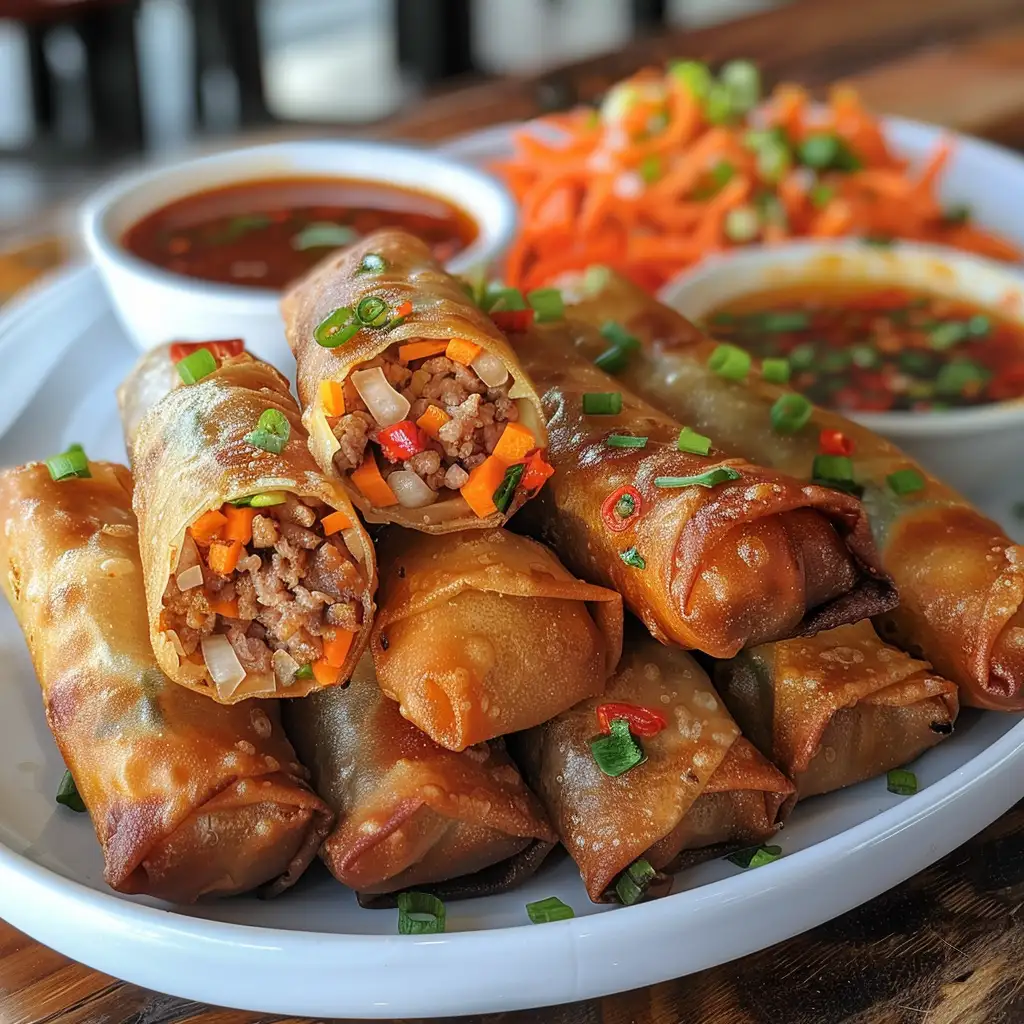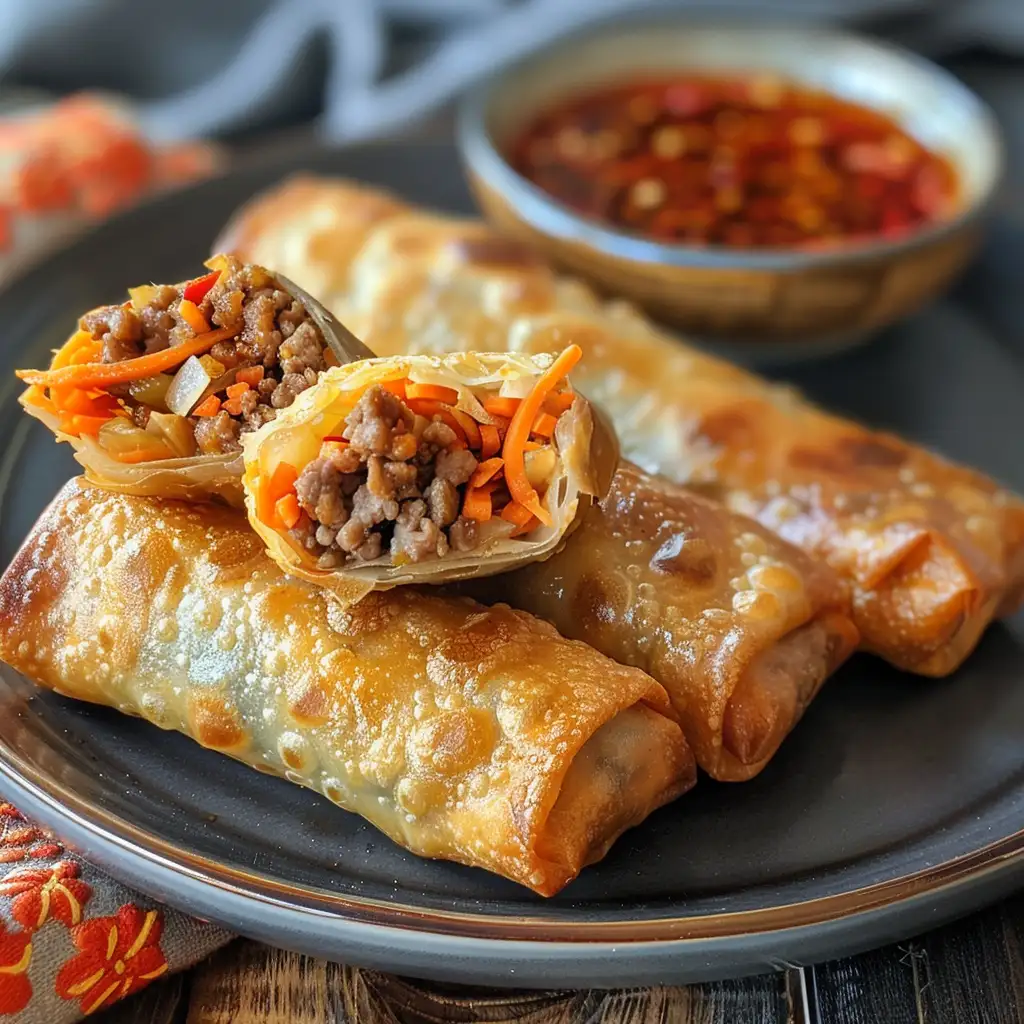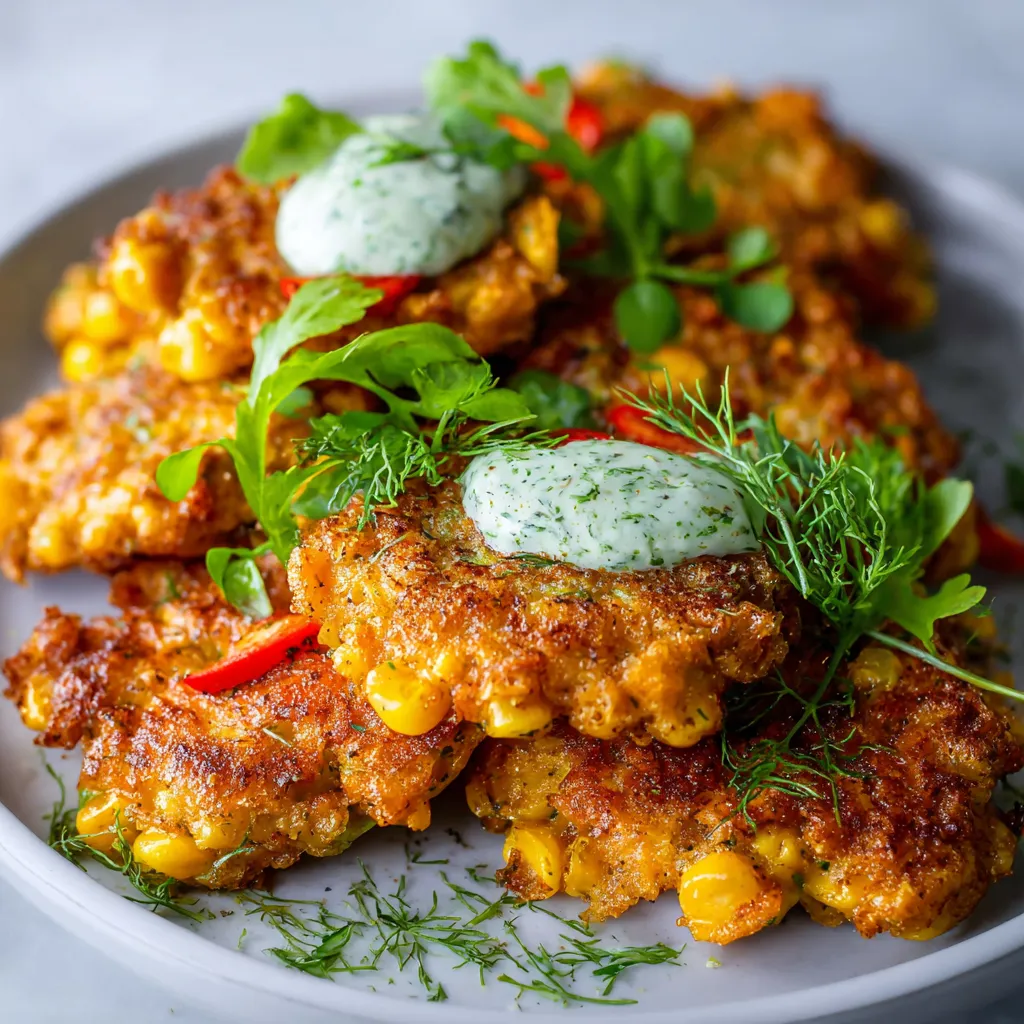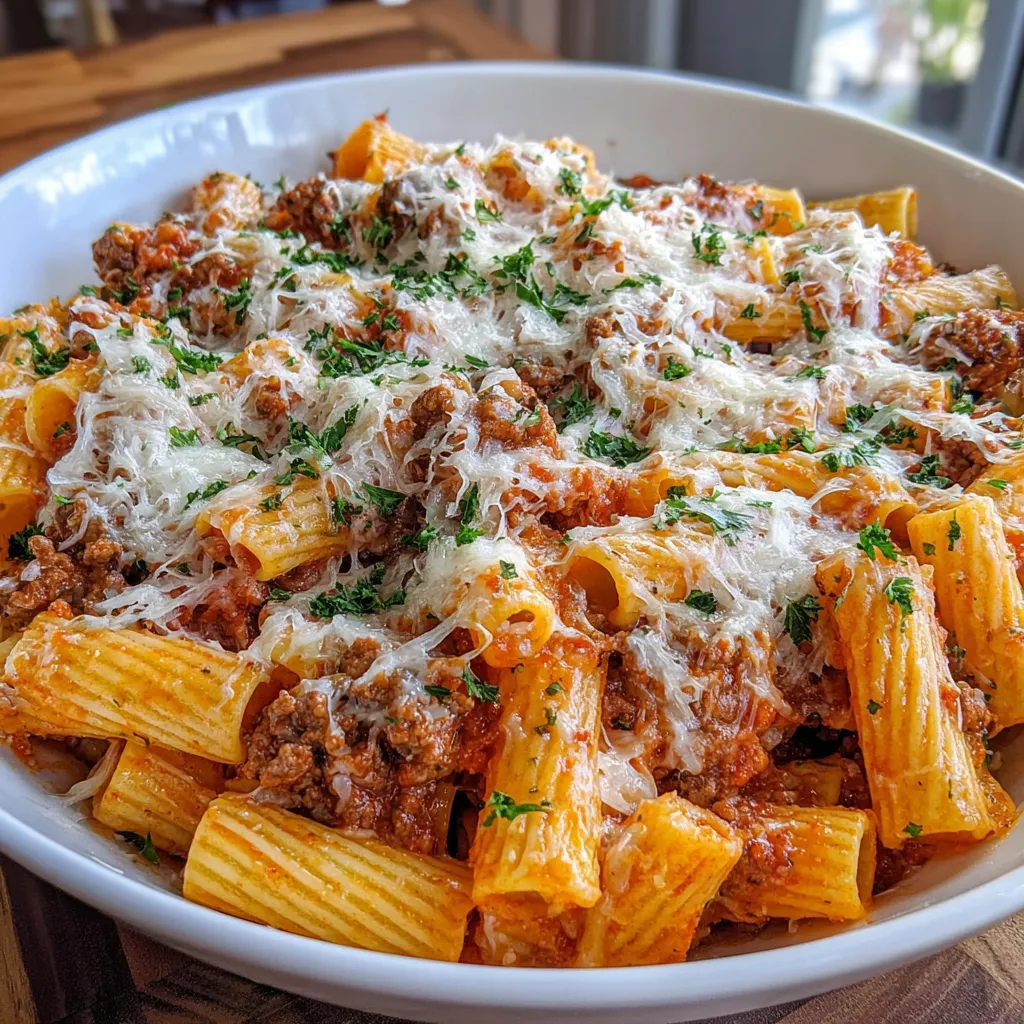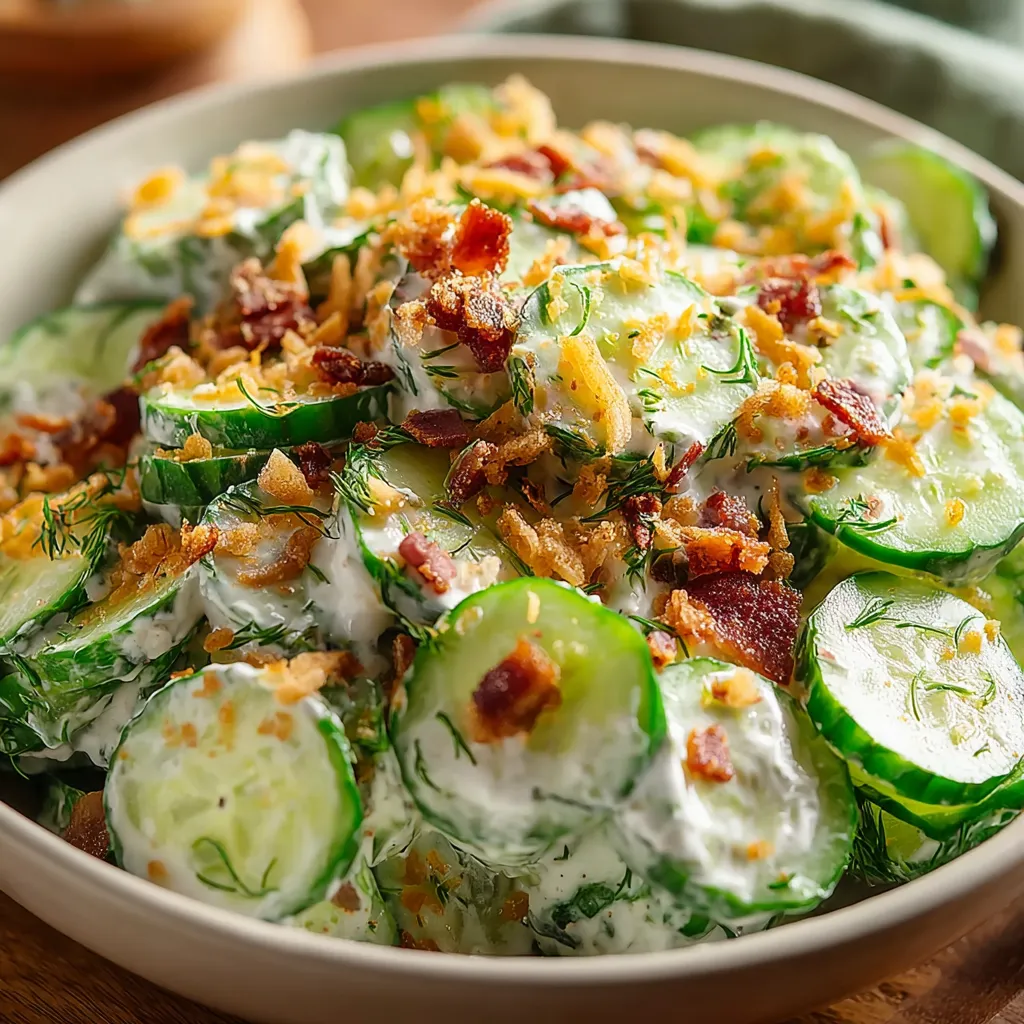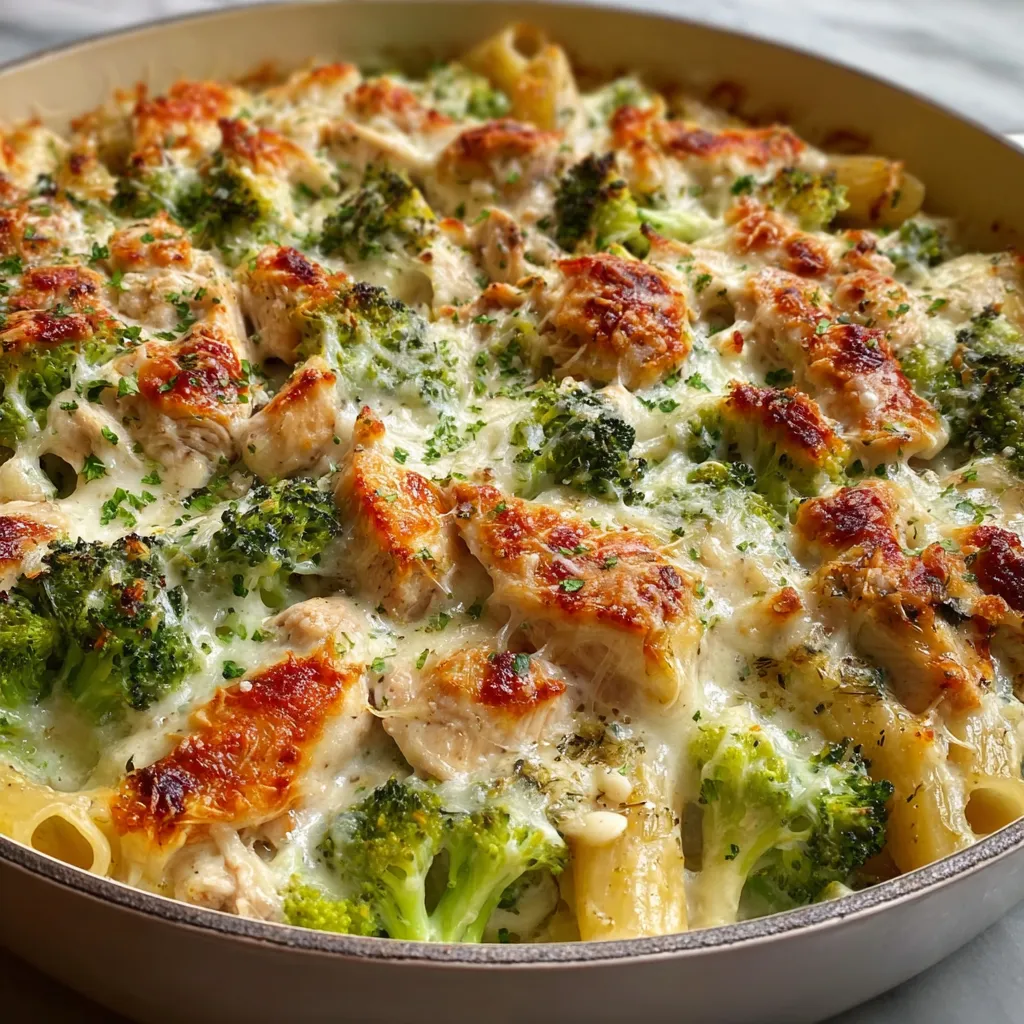Introduction to Lumpia
Lumpia, a cornerstone of Filipino cuisine, boasts a rich tapestry of history and cultural significance. This beloved dish, akin to spring rolls found across Asia, encapsulates the fusion of indigenous and foreign influences, notably Chinese, that have shaped the Philippines’ culinary landscape. Its ubiquity at celebrations and family gatherings underscores Lumpia’s pivotal role in Filipino gastronomy, serving not just as a food item but as a symbol of communal bonding and tradition.
Detailed Recipe Overview
The provided link unveils a mouthwatering Lumpia recipe that guides enthusiasts through the art of crafting these savory rolls, celebrated for their crispy exteriors and flavorful fillings. Central to this recipe are key ingredients that narrate the story of the Philippines’ culinary heritage:
- Ground pork or beef – Reflecting the dish’s Chinese origins, yet adapted to local tastes.
- Carrots and water chestnuts – Adding crunch and nutritional value, embodying the balance in Filipino cuisine between flavor and health.
- Garlic and onions – The aromatic base that is quintessential in Filipino cooking, symbolizing the layered complexity of its culinary traditions.
These components, each bearing its own cultural significance, converge in Lumpia to create a gastronomic experience that transcends mere taste, embodying the essence of Filipino hospitality and warmth.
Step-by-Step Cooking Guide
Crafting Lumpia is an art that melds simplicity with technique, yielding rolls that are as delicious to eat as they are satisfying to make:
- Preparation of ingredients: Begin by finely chopping the vegetables and mixing them with the ground meat, infusing the mixture with a rich array of spices and seasonings. This preparatory step is crucial for achieving the signature burst of flavors characteristic of Lumpia.
- Wrapping techniques: The key to perfect Lumpia lies in the wrapper’s delicate encasement of the filling. A thin, pliable wrapper is gently folded over the savory mix, rolled tightly to ensure no filling escapes during cooking.
- Cooking methods: Frying is the traditional method, offering a golden, crispy texture that is irresistibly appealing. However, for a healthier alternative, baking has emerged as a popular choice, achieving a crispy exterior without the added oil.
By adhering to these steps, one can master the creation of Lumpia, a dish that delights the palate and heart alike. For a deeper dive into its cultural backdrop and additional recipes, consider exploring resources on the history of Filipino cuisine and the health benefits of traditional Filipino ingredients.
Variations of Lumpia
Lumpia stands as a testament to the culinary versatility and creativity inherent in Filipino and Southeast Asian cuisines. This beloved dish has evolved over time, embracing both traditional and modern interpretations that cater to a wide range of palates and preferences.
- Traditional vs. Modern Interpretations: At its core, traditional Lumpia is made with a simple yet flavorful mixture of minced meat and vegetables. Modern variations, however, have introduced unexpected ingredients such as cheese, kimchi, and even chocolate, expanding the boundaries of this classic dish.
- Regional Variations within the Philippines and Southeast Asia: Depending on the region, Lumpia can vary significantly. From the fresh, non-fried Lumpiang Sariwa of the Philippines to the meat-heavy rolls found in Indonesia, each variation reflects the local flavor profiles and culinary traditions.
- Vegetarian and Meat-based Fillings: While originally filled with ground pork or beef, there’s now a wide array of fillings to choose from, including tofu, mushrooms, and a variety of vegetables, offering something for everyone regardless of dietary preferences.
Serving and Presentation
When it comes to serving and presentation, Lumpia can be as versatile as its fillings. The dish is often accompanied by a selection of dipping sauces, ranging from the traditional sweet and sour sauce to vinegar-based dips infused with garlic and chili.
- Traditional Accompaniments and Dipping Sauces: Besides sauces, Lumpia is sometimes served with rice or noodles, making it a fuller meal.
- Presentation Styles for Different Occasions: For festive occasions, Lumpia may be presented in elaborate platters, garnished with carved vegetables and flowers, while a more casual presentation might simply involve a basket filled with these golden rolls, ready for dipping and sharing.
Nutritional Information
Concerning nutritional information, Lumpia can be adapted to suit health considerations and dietary needs without sacrificing flavor.
- Caloric Content and Health Considerations: Traditionally deep-fried, Lumpia can be high in calories. However, baking offers a lighter alternative, significantly reducing the dish’s oil content.
- Substitutions for Healthier Versions: Ingredients such as lean meats, whole wheat wrappers, or additional vegetables can be used to enhance the nutritional value of Lumpia, making it a healthier option that still satisfies the craving for something savory and crisp.
For more insights into healthy eating and substitutions in Filipino cooking, exploring resources like Celebrating Filipino Culture can provide valuable context and inspiration.
Cultural Significance and Celebrations
The cultural tapestry of the Philippines is rich and vibrant, with Lumpia serving as a culinary emblem of Filipino celebrations and its deep-rooted traditions. Its symbolic meaning extends beyond its taste, representing unity, abundance, and the shared joy of Filipino gatherings.
- Lumpia in Filipino Celebrations and its Symbolic Meaning: Often featured during special occasions such as birthdays, weddings, and holiday festivities, Lumpia is more than just food; it is a symbol of good luck, prosperity, and the tight-knit bonds of family and community.
- Lumpia’s Role in Filipino Diaspora Communities: For Filipinos living abroad, Lumpia is a taste of home that carries sentimental value, often prepared for family reunions, community events, and cultural festivals, thereby preserving and promoting Filipino heritage across the globe.
FAQs Section
When it comes to enjoying Lumpia, both enthusiasts and newcomers alike may have questions regarding its preparation and serving. Here are some insights based on popular queries:
- Best Practices for Freezing and Reheating Lumpia: Freeze uncooked Lumpia in a single layer before transferring to a bag to prevent them from sticking. Reheat in the oven to preserve the crispiness.
- Tips for Making Lumpia Wrappers from Scratch: Combine flour, water, and a bit of salt. The batter should be thin. Cook in a non-stick pan like crepes, ensuring they’re thin and pliable.
- How to Make Lumpia Sauce: A simple Lumpia sauce can be made by combining vinegar, soy sauce, garlic, and sugar, adjusted to taste. For a sweeter version, ketchup and pineapple juice are popular additions.
Conclusion
Lumpia, with its crispy exterior, savory filling, and rich cultural significance, embodies the essence of Filipino cuisine and its global appeal. Whether served in Manila or miles away from the Philippines, Lumpia brings people together, celebrating the rich heritage and communal spirit of the Filipino people. Its versatility and enduring popularity underscore Lumpia as not just a dish but a celebration of Filipino culinary ingenuity.
PrintLumpia
- Total Time: 30 minutes
- Yield: 20-24 rolls 1x
Description
This ultimate Lumpia recipe from The Recipe Critic is your gateway to creating authentic Filipino spring rolls at home. Perfect for family dinners, special occasions, or a taste of Filipino heritage, these Lumpia are crispy, filled with a savory mix of vegetables and meat, and sure to be a hit with everyone.
Ingredients
- 1 lb ground pork (or beef)
- 2 cups shredded carrots
- 1 cup chopped water chestnuts
- ½ cup chopped green onions
- 2 tablespoons soy sauce
- 1 tablespoon garlic, minced
- Salt and pepper to taste
- Lumpia wrappers
- Vegetable oil for frying
Instructions
- In a large bowl, combine ground meat, carrots, water chestnuts, green onions, soy sauce, and garlic. Season with salt and pepper.
- Place a tablespoon of the mixture into each Lumpia wrapper and roll tightly, sealing the edge with a bit of water.
- Heat oil in a pan over medium-high heat and fry the Lumpia until golden brown, draining on paper towels.
Notes
- For a vegetarian option, substitute ground meat with tofu or additional vegetables.
- Lumpia can be frozen before frying for later use.
- Prep Time: 20 minutes
- Cook Time: 10 minutes
- Category: Appetizer
- Method: Frying
- Cuisine: Filipino
Nutrition
- Serving Size: per serving
- Calories: 150
- Sodium: 200mg
- Fat: 8g
- Carbohydrates: 12g
- Fiber: 1g
- Protein: 8g

